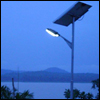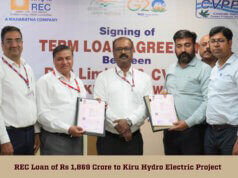India’s eastern region has an advantage over the rest of the country in terms of availability of power but lags behind with respect to electrification of villages and households as well as per capita consumption, according to a recent report by the Confederation of Indian Industry and PricewaterhouseCoopers.
Titled ‘The leap towards sustainable power in eastern India,’ the report said that the eastern states of Bihar, Chhattisgarh, Jharkhand, Odisha and West Bengal were abundantly blessed with rich mineral resources including coal, the fuel foreseen to dominate the Indian power generation sector for a long time to come. It added that in comparison to other regions of the country, the eastern region was relatively better off in terms of the demand-supply gap with a peak deficit of 1.3 per cent compared to the all-India deficit of 4.5 per cent, and an energy deficit of 1.2 per cent compared to the all-India deficit of 4.2 per cent in FY14.
During the 12th Plan period (2012-2017), the eastern region is expected to induct more than 25,600 MW of generation capacity, accounting for 29 per cent of the total capacity allocated in the Plan.
The report pointed out that several initiatives taken by the eastern region had led to growth of the power sector.
“Odisha is the first state in India which introduced and implemented power sector reforms. Bihar has taken key initiatives to operate the public private partnership model in power distribution. West Bengal demonstrates a flawless public governing system in all three aspects viz. generation, transmission and distribution. Chhattisgarh is leading power generation by enabling effective utilization of its natural resources. Jharkhand is mineral rich and has the tremendous potential for power generation through various sources,” it said.
As per the Central Electricity Authority’s Load-Generation Balance Report, the anticipated energy and peaking shortage in the country will be 5.1 per cent and 2 per cent respectively in FY15. The peaking shortage will prevail in all the regions except the East, varying from 1.4 per cent in the North to 22.2 per cent in the South. The East is expected to be in a position of surplus in terms of peak. However, there will be an energy deficit of 3.4 per cent in the East, while other regions such as the South and North-East are going to face a deficit of 12.7 per cent and 17.4 per cent respectively. Whereas Odisha and West Bengal will have less than 1 per cent of energy deficit, the deficit in Bihar and Jharkhand is going to be in double digits. Jharkhand and Odisha will have surplus of peak. Bihar, with 25.9 per cent peak deficit, is going to be the worst affected state.
The report, referring to CEA’s Village Electrification Progress Report, said that despite the advantage over other regions in terms of availability of power, village electrification in the East was 92 per cent as compared to the overall 95.7 per cent of rural electrification in the country and 97 per cent rural electrification of the rest of the country. It added that rural electrification in Odisha was the lowest at 81.6 per cent and highest in West Bengal at 99.99 per cent.
India’s total generation capacity in June 2014 stood at almost 250 GW, accounting for 4.5 per cent of global capacity. The demand for electricity in the country has grown at an average rate of 5.5 per cent in the last five years. The capacity addition during the 11th Plan period (2007-2012) stood at 54,964 MW against the target of 62,374 MW. The 12th Plan has set the target for capacity addition at over 88,537 MW to meet the energy deficit and boost economic growth. During the 13th Plan period (2017-2022), about 93 GW of capacity addition is planned to meet the consumer demand.
In order to reduce high aggregate technical and commercial losses as well as improve the electrification levels of villages and households, the total fund requirement for sub-transmission and distribution system development in urban and rural areas during the 12th Plan period is estimated at more than Rs. 3,000,000 million.
For achieving the government’s ‘power for all’ target, the report suggested that policy makers explore options in transforming the distribution and transmission sector, focus on clean, affordable and reliable energy generation and implement demand side management and energy efficiency initiatives. Such measures, it said, would not only resolve the power deficit scenario but also contribute towards reducing the carbon footprint of the nation thereby helping develop a more sustainable world.











